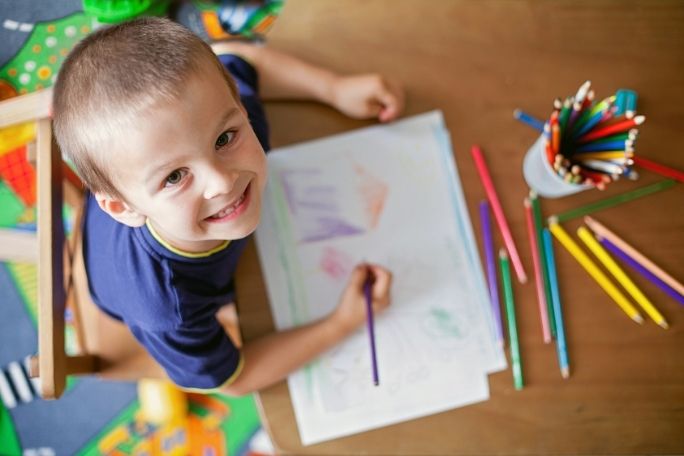Lesson summary
Children explore the nature in their yard. Younger children are asked to investigate elements of nature in their yard. Older children are invited to think about what nature is and to remember what nature they have in your service’s yard. They will then draw or paint the parts of nature from the yard that they remember, and take their artworks outside to compare what they remembered about the nature in their yard with what is actually out there.
Activity Intention:
- This activity is designed to help connect children to the wonders of the natural world through sensory and play-based learning.
Lesson guides and printables
Lesson details
Curriculum mapping
Learning Outcome 2: Children are connected with and contribute to their world
2.4 Children become socially responsible and show respect for the environment
Learning Outcome 4: Children are confident and involved learners
4.1 Children develop dispositions for learning such as curiosity, cooperation, confidence, creativity, commitment, enthusiasm, persistence, imagination and reflexivity
4.4 Children resource their own learning through connecting with people, place, technologies and natural and processed materials
Learning Outcome 5: Children are effective communicators
5.1 Children interact verbally and non-verbally with others for a range of purposes
5.3 Children express ideas and make meaning using a range of media
Resources required
Ages 0 to 2:
- Nature in our yard flashcards – Cut out each image and attach the provocations to the back of each corresponding image.
Ages 3 to 5
- Natural/not natural flashcards – Cut out each image and attach the provocations to the back of each corresponding image
- Paper
- A range of art tools such as Grasp Crayons, Jumbo Colour Pencils, Connector Paint Box, Jumbo Wax Crayons and Jumbo Connector Pens.
Additional info
Faber-Castell has long understood the importance of creativity to all people, especially to young people. It is also continuously searching for environmentally friendly processes and high-quality materials to enhance children’s creative experiences throughout every development phase. For more information about Faber-Castell, click here.


Welcome back!
Don't have an account yet?
Log in with:
Create your free Cool.org account.
Many of our resources are free, with an option to upgrade to Cool+ for premium content.
Already have an account?
Sign up with:
By signing up you accept Cool.org's Terms and Conditions(Opens in new tab) and Privacy Policy(Opens in new tab).